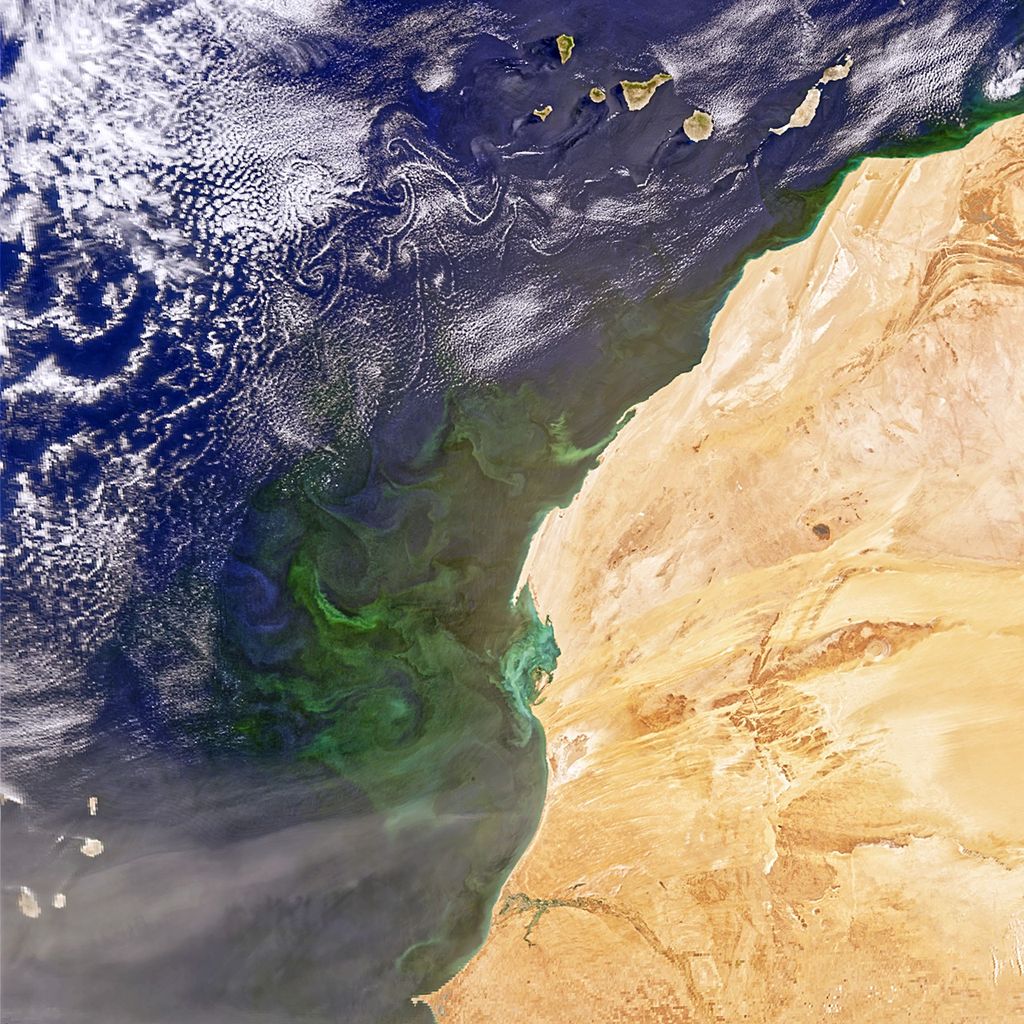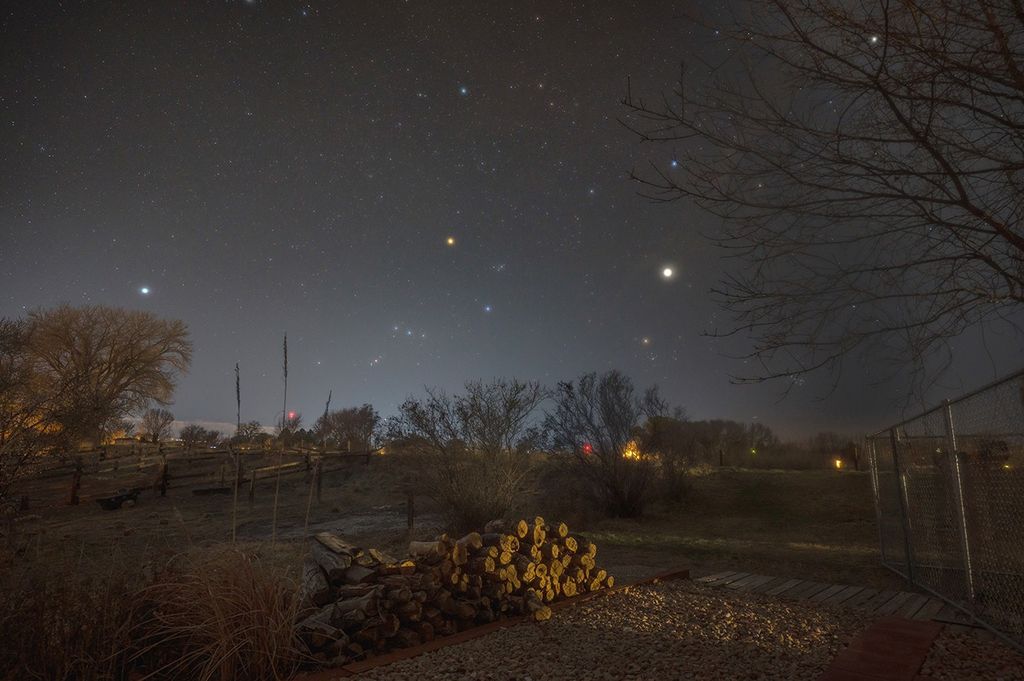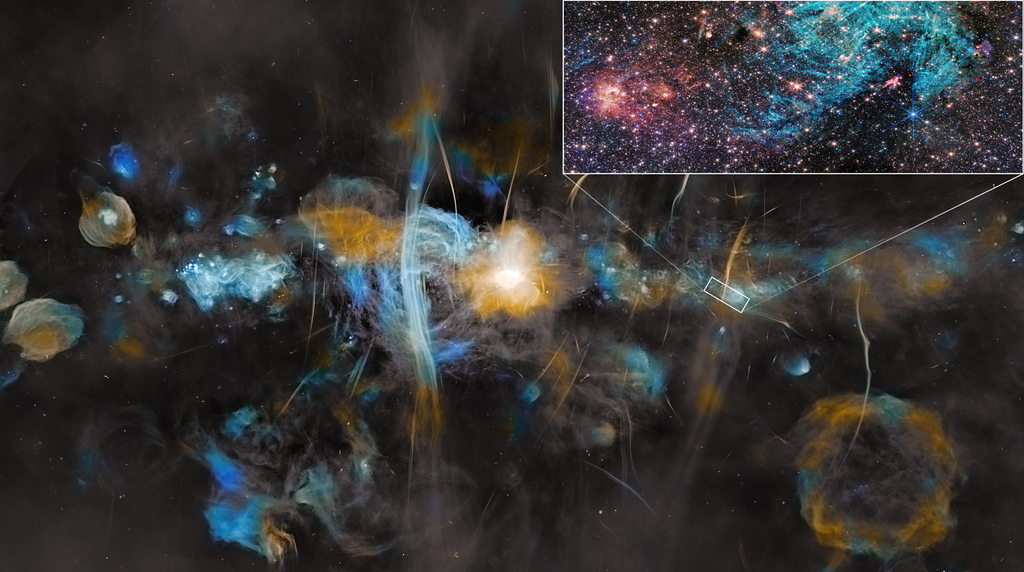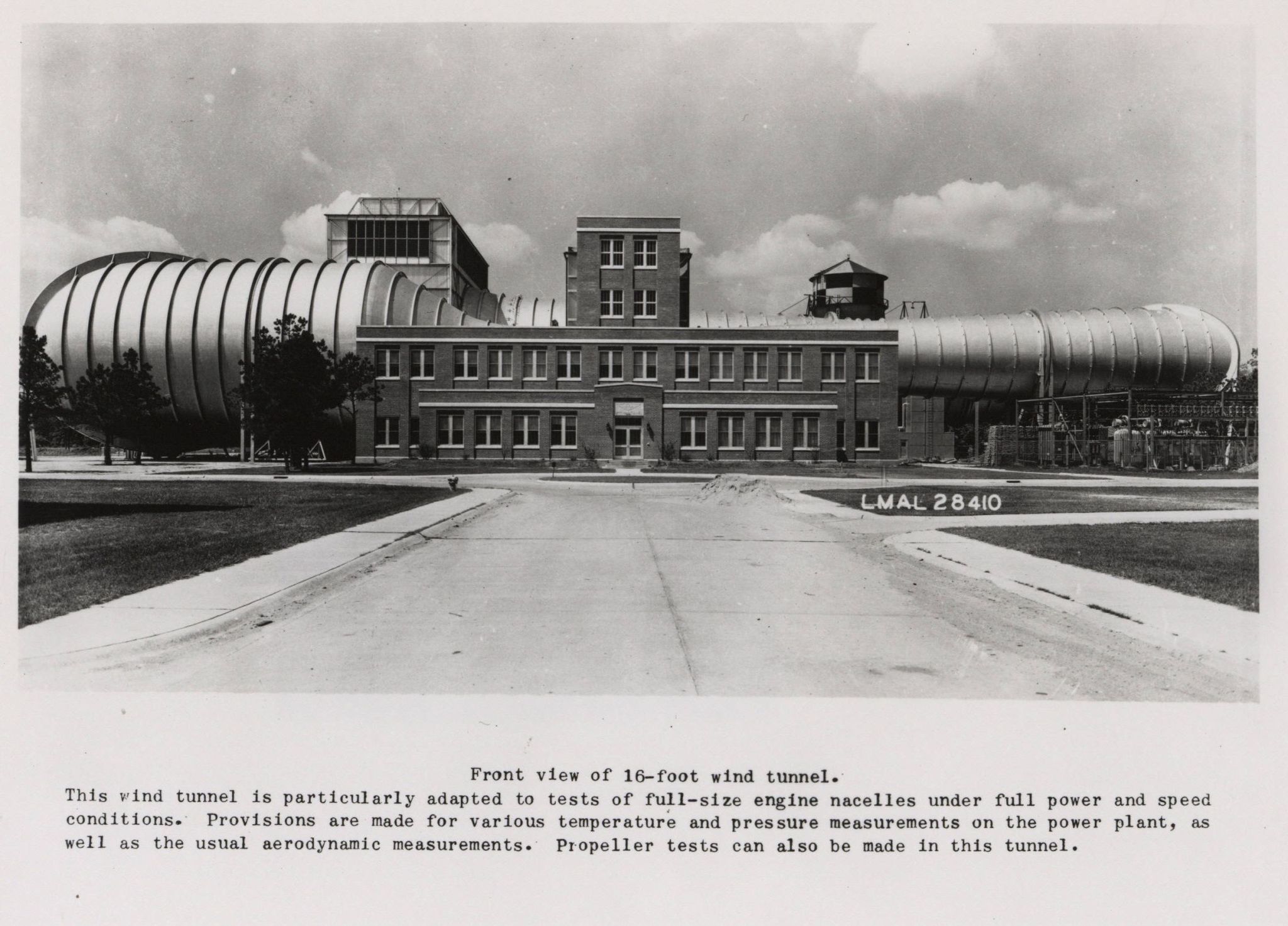
Quick Facts
Year Built: 1941
Historic Eligibility: National Register Eligible
Important Tests: A-26 Invader; X-1; P-1127; Titan Rocket; F-111 Aardvark; B-58 Hustler; F-14 Tomcat; F-15 Eagle; F-18 Hornet; B-1A Lancer; B-2 Spirit; X-20 Dyna-Soar; Test 191: Apollo Moon Mission Spacecraft; Saturn Rocket; Space Shuttle; C-5M Super Galaxy; Test 420: NASP; X-45; NATF; HIMAT.
Year Demolished: 2011 (tunnel component)
History
In the late 1930s, the Special Committee on Future Research Facilities proposed the construction at Langley of a wind tunnel with a 16-foot diameter test section that could evaluate the cowling and cooling of full-sized aircraft engines and propellers.
Approval for construction was granted in 1939. The new 16-Foot High-Speed Tunnel (HST) became operational in November 1941 and began testing on Dec. 5, 1941, just two days before the Japanese attack on Pearl Harbor. Later in the war, in addition to engine cooling work, testing focused on wing/aileron/elevator flutter problems and bomb/bomb fuse aerodynamics.
While the 16-Foot HST was never Langley’s largest or fastest wind tunnel, it did play an important role in the post-war evolution of tunnel design. In the late 1940s, Langley physicist Ray H. Wright observed that the interference caused by wind tunnel walls could be minimized by placing slots in the test section throat, a concept that came to be known as the “slotted throat” or “slotted wall” test section.
Testing this new design in the 16-Foot HST, Langley engineers found that it allowed for transonic speeds (up to and beyond the speed of sound, Mach 1, approximately 761 mph at sea level). Small circular “parasite” test sections operated at speeds up to Mach 1.6 by sucking outside air through a long diffuser into the low-pressure test section of the 16-Foot HST. The Collier Trophy-winning slotted test section was first proven to work in one of these test sections in 1947. Retrofitted with a new slotted test section throat and re-powered to 60,000 horsepower, the facility was re-designated the 16-Foot Transonic Tunnel (TT) in December 1950.
Work on the slotted test section in the 16-Foot HST was instrumental in John Stack (Division Chief) and associates receiving the Collier Trophy for the conception, development, and practical application of the transonic wind tunnel throat.
In 1961, a revision of the Langley 16-Foot TT added a compressor driven by a 36,000 horsepower motor. This compressor removed about 4.5 percent of the tunnel mass flow near the test section walls (primarily boundary layer flow) during each circuit around the tunnel and exhausted it to the atmosphere. The wind tunnel with this test-section air removal system was placed in operation on March 9, 1961, and achieved a maximum test-section Mach number slightly greater than 1.30.
During the long history of the 16-Foot Transonic Tunnel, the tunnel staff managed several other test facilities that added significantly to its test capabilities. This included: an outdoor static (no external flow) engine/propeller test stand; Annular Transonic Tunnel; Jet Exit Facility (JETF); 4- by 4-Foot Supersonic Pressure Tunnel; and 16- by 24-Inch Water Tunnel.
The 16-Foot TT remained an important test facility through the Cold War era and beyond, with virtually every military airplane design undergoing testing in the tunnel. A partial list of these aircraft includes the B-58 Hustler; F-100 Super Sabre; F-111 Aardvark; F-14 Tomcat; F-15 Eagle; F-18 Hornet; C-5 Galaxy; F-117 Nighthawk; B-1 Lancer; B-2 Spirit; X-45 Unmanned Combat Air Vehicle; Apollo/Saturn moon mission spacecraft; Space Shuttle; and the Boeing X-40 (test vehicle for the USAF X-37 Reusable Launch Vehicle).
The tunnel also supported experimental programs such as the X-1, X-15, Highly Maneuverable Aircraft Technology (HiMAT) and the Joint Advanced Strike Technology (JAST). Rehabilitation efforts in 1969, 1977, and 1989-90 kept the 16-Foot TT equipped with state-of-the-art testing facilities, but with the end of the Cold War, NASA was faced with a surplus of tunnels across the country.

Under the Wind Tunnel Enterprise program established in 1994, the 16-Foot TT provided testing facilities to clients in private industry, covering its $10 million annual operating budget with customer fees.
NASA finally closed the facility in 2004. The 16-Foot tunnel circuit was demolished in 2011. The only remaining structure from the 1146 complex is the brick office building.
Technical reports about the work done in these facilities can be found on the NASA Technical Reports Server.
- Flight Measurements of the Pressure Distribution on the Wing of the X-1 Airplane (10 Percent Thick Wing) over a Chordwise Station near the Midspan, in Level Flight at Mach Numbers from 0.79 to 1.00 and in a Pull up at a Mach Number of 0.98 – NASA Technical Reports Server (NTRS)
- The NASA Langley 16-Foot Transonic Tunnel: Historical Overview, Facility Description, Calibration, Flow Characteristics, and Test Capabilities – NASA Technical Reports Server (NTRS)
- Operating Characteristics of the Multiple Critical Venturi System and Secondary Calibration Nozzles Used for Weight-Flow Measurements in the Langley 16-Foot Transonic Tunnel – NASA Technical Reports Server (NTRS)
- The Langley Annular Transonic Tunnel – NASA Technical Reports Server (NTRS)
Related Materials
16-Foot Transonic Tunnel: 50 Years of Research (1940-1990)
1942 Floor Plan


















/quantum_physics_bose_einstein_condensate.jpg?w=1024)

















